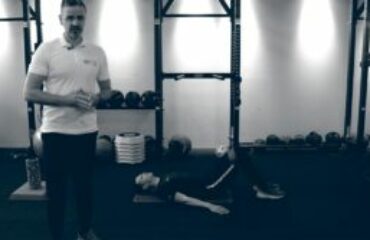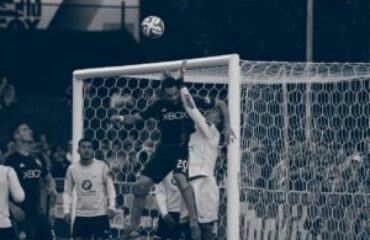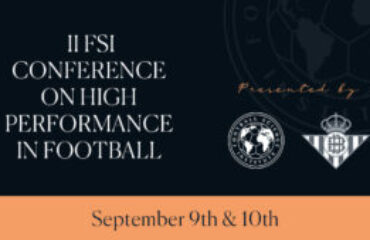1. Why the Chosen Ones May Not Always Be the Best Leaders: Criteria for Captain Selection as Predictors of Leadership Quality and Acceptance.
Butalia R(1), Fransen K(1), Coffee P(2), Laenens J(1), Boen F(1).
Author information: (1) Department of Movement Sciences, KU Leuven, Leuven, Belgium. (2) Faculty of Health Sciences and Sport, University of Stirling, Stirling, United Kingdom.
In football, team captains are usually selected based on non-leadership factors such as team tenure, technical abilities, or salary. In the present study surveying 450 coaches and 198 players from Flemish football and volleyball teams, the results consistently indicated that captains who were selected for having good motivational and social competencies were given higher ratings on perceived leadership quality and acceptance by the players.
Front Psychol. 2021 Jan 18;11:616966. doi: 10.3389/fpsyg.2020.616966. eCollection 2020..
2. Epidemiology of Achilles Tendon Rupture in Italian First Division Football (Soccer) Players and Their Performance After Return to Play.
Grassi A(1), Caravelli S, Fuiano M, D’Hooghe P, Filippini M, Della Villa F, Mosca M, Zaffagnini S.
Author information: (1) 2nd Clinic of Orthopaedics and Traumatology, IRCCS Istituto Ortopedico Rizzoli, Bologna, Italy; Department of Orthopaedic Surgery and Sports Medicine, Aspetar Hospital, Doha, Qatar; and Education and Research Department, Isokinetic Medical Group, FIFA Medical Centre of Excellence, Bologna, Italy.
Professional male footballers participating in Serie A in 11 consecutive seasons (2008/2009-2018/2019) were screened to identify Achilles Tendon Ruptures (ATRs) through the online football archive transfermarkt.com. 11 ATRs were found in 11 footballers with a mean age of 29.8 ± 4.4 years, meaning an overall incidence rate of 0.007 injuries per 1000 hours of play. All players returned to play soccer and participated in an official match after a mean of 274 ± 98 days; however, after 2 seasons, up to 40% players decreased their level of play by reducing the number of games or playing in a lower Division.
Clin J Sport Med. 2021 Feb 1. doi: 10.1097/JSM.0000000000000879. Online ahead of print.
3. A Longitudinal Exploration of Match Running Performance during a Football Match in the Spanish La Liga: A Four-Season Study.
Pons E(1), Ponce-Bordón JC(2), Díaz-García J(2), López Del Campo R(3), Resta R(3), Peirau X(4), García-Calvo T(2).
Author information: (1) Sports Performance Area, FC Barcelona, 08028 Barcelona, Spain. (2) Faculty of Sport Sciences, University of Extremadura, 10003 Cáceres, Spain. (3) LaLiga Sport Research Section, 28043 Madrid, Spain. (4) National Institute of Physical Education of Catalunya, 25192 Lleida, Spain.
Across four seasons (2015/2016-2018/2019), running performance data were collected from all matches in the First Spanish Division (n = 1520) and Second Spanish Division (n = 1848), using the Mediacoach® System. The results showed higher total distances at all speeds (total distance, 14-21 km·h-1, 21-24 km·h-1, more than 24 km·h-1, and the number of sprints between 21 and 24 km·h-1 and more than 24 km·h-1) in the First Spanish Division than in the Second Spanish Division. Across the seasons, the results showed a decrease in total distance and an increase in the high-intensity distances and number of sprints performed in both leagues.
Int J Environ Res Public Health. 2021 Jan 28;18(3):1133. doi: 10.3390/ijerph18031133.
4. Mortality of Spanish Former Elite Soccer Players and Coaches.
Diz JC(1), Sueiro SI(2), Ferreira ED(3), Sanchez-Lastra MA(4), Ayán C(5).
Author information: (1) Department of Functional Biology and Health Sciences, Well-Move Research Group, Faculty of Education and Sports Sciences, University of Vigo, Pontevedra, Spain. (2) Department of Special Didactics, Faculty of Education and Sports Sciences, University of Vigo, Pontevedra, Spain. (3) Department of Faculty of Medicine, University of Santiago de Compostela, Santiago de Compostela, Spain. (4) Department of Special Didactics, University of Vigo, Pontevedra, Spain. (5) Department of Special Didactics, Well-Move Research Group, Faculty of Education and Sports Sciences, University of Vigo, Pontevedra, Spain.
This paper analyzes the mortality hazard ratio of 1333 Spanish male players born before 1950, and who played in elite leagues from 1939, compared with the Spanish population. Players showed significantly lower mortality than the general population, but this advantage decreased with advanced age, disappearing after 80 years. Unadjusted median survival time was 79.81 years. Continuing their career as coaches after retirement from playing did not confer further benefits in longevity.
Int J Sports Med. 2021 Feb 1. doi: 10.1055/a-1308-3116. Online ahead of print.





